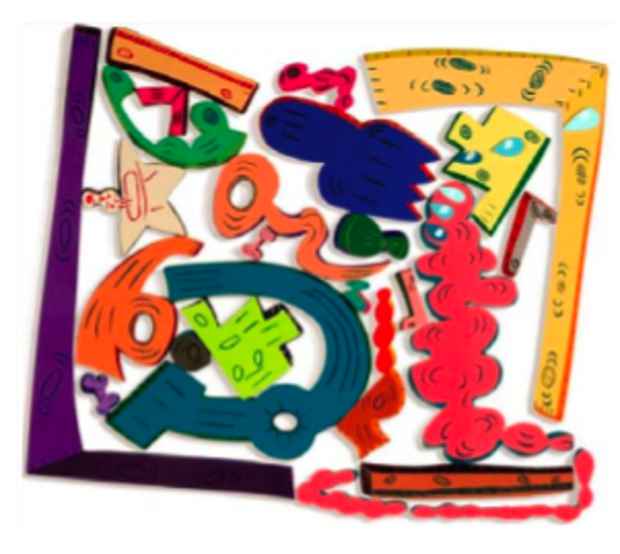"iconoGRAPHIC" Exhibition
RYAN LEE

This event has ended.
Mary Ryan Gallery is pleased to announce, iconoGRAPHIC, an exhibition of drawings, prints and multiples by Carroll Dunham, Philip Guston, Elizabeth Murray and Peter Saul that connects their work through each artist’s individual use of cartoon-lik al and/or political narratives. Comic artists entertain and inform by relying on text paired with imagery to provide a complete, detailed story. Artists inspired by comics assume many of the same narrative challenges as comic artists, but with only the visual set of communicative tools. These artists use exaggeration of recognizable forms, the symbolic meanings of color, and altered scale as the components of a new language; a visual vocabulary that transcends generations.
The earliest and most influential of these artists was Philip Guston (1913-1980), who began his artistic training in his adolescence with a correspondence course at the Cleveland School of Cartooning. The fantasy world of comics provided Guston a place of retreat. It was only much later that he pursued his iconic simplified, stylized, and representational forms after he turned away from Abstract Expressionism. The prints and drawings completed during the last year of his life are deeply autobiographical and reflect his deteriorating health. Painter (1981) can be interpreted as self-portrait, where he constructed the artist figure of spare pieces of canvas wildly sewn together and easily pulled apart.
Although much younger, Elizabeth Murray (1940-2007) belonged a small group of painters, including Guston, who during the 1970s became indifferent to distinctions between abstraction and representation, and between high and low art. Perhaps it was this openness that drew her to cartoon-like forms, or perhaps the origins of her iconography can be attributed to her time at the School of the Art Institute of Chicago, where she experienced the city’s rich tradition of comics-inspired art. Murray’s work is highly personal yet easily relatable and energetic--with bouncing coffee cups, flying tables or Gumby-like silhouettes. In Bill Alley (2006), Murray extended the free-form emotional content of her shaped canvas works to prints. She worked at the edges of illusion and reality in a visual ambiguity that reflected her emotional state.
The gestural marks of Carroll Dunham (b.1949) also convey a sense of action appropriated from comics. His calligraphic lines enliven the work by playing with familiar elements of broad caricatures, committing amusements and diversions that reference the Sunday Funnies. In these types of imagery, volume is flexible, movable and can be adjusted in all directions, which inspired Dunham’s iconographic penile figures. The Top Hat figure appears partially subverted with a penis-like nose to literalize the status of a man’s hat as a phallic symbol.
The implied references become less abstracted and more literal in the art of Peter Saul (b.1934), as his work also contains a stronger political statement. Saul’s work is a socially and politically charged marriage of pop art and surrealism with cartoon figures, advertisements and packaging graphics. His critiques of American culture are appropriations not only of comics’ stylized iconography but also comics’ history as an accessible medium for everybody about everyday issues. In Saul’s drawing, Modern Home (ABCD), 1966, he builds an architectural fantasy with a house constructed of puzzle pieces that presents a humorous and witty critique of contemporary suburban life.
[Image: Elizabeth Murray "Bill Alley" 3D lithograph construction Edition of 25, 35 x 41-1/8 in.]
Media
Schedule
from April 01, 2010 to May 08, 2010